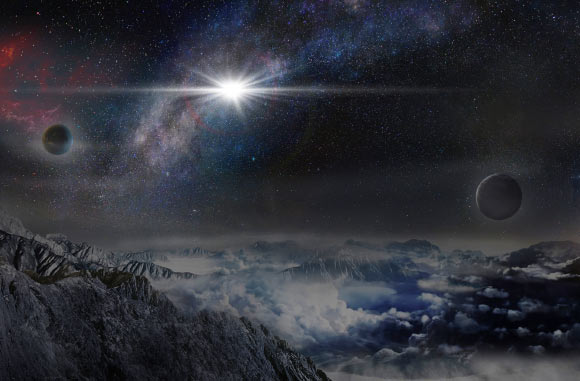Astrophysicists One Step Closer to Unlocking Mystery of Superluminous Supernovae | Astronomy – Sci-News.com
SN 2006gy, a superluminous supernova discovered in 2006, gained its exceptional brightness when a normal Type Ia explosion smashed into a dense shell of stellar material, according to new research led by Stockholm University astrophysicists.

An artist’s impression of a superluminous supernova as it would appear from an exoplanet located 10,000 light years away in the host galaxy. Image credit: Jin Ma / Beijing Planetarium.
Superluminous supernovae are up to 100 times brighter than a typical supernova, but there is no consensus on how such bright stellar explosions are produced.
Early observations of SN 2006gy, one of the brightest stellar explosions ever studied, indicated that the event was a Type IIn supernova.
However, a little more than a year after the explosion, SN 2006gy produced an unusual spectrum with unidentified emission lines.
“No one had compared spectra from neutral iron, i.e. iron which all electrons retained, with the unidentified emission lines in SN 2006gy, because iron is normally ionized (one or more electrons removed),” said Dr. Anders Jerkstrand, from the Department of Astronomy at Stockholm University.
“We tried it and saw with excitement how line after line lined up just as in the observed spectrum.”
“It became even more exciting when it quickly turned out that very large amounts of iron was needed to make the lines — at least a third of the Sun’s mass — which directly ruled out some old scenarios and instead revealed a new one.”
According to the team’s model, the progenitor to SN 2006gy was a double star consisting of a white dwarf of the same size as the Earth and a hydrogen-rich massive star as large as our Solar System in close orbit.
As the hydrogen rich star expanded its envelope, which happens when new fuel is ignited in the late stages of evolution, the white dwarf was caught in the envelope and spiraled in towards the center of the companion.
When it reached the center the unstable white dwarf exploded in a Type Ia supernova.
This supernova then collided with the ejected envelope, which is flung out during the inspiral, and this gigantic collision gave rise to the light of SN 2006gy.
“That a Type Ia supernova appears to be behind SN 2006gy turns upside down what most researchers have believed,” Dr. Jerkstrand said.
“That a white dwarf can be in close orbit with a massive hydrogen-rich star, and quickly explode upon falling to the center, gives important new information for the theory of double star evolution and the conditions necessary for a white dwarf to explode.”
The research is published in the journal Science.
_____
Anders Jerkstrand et al. 2020. A Type Ia supernova at the heart of superluminous transient SN 2006gy. Science 367 (6476): 415-418; doi: 10.1126/science.aaw1469






